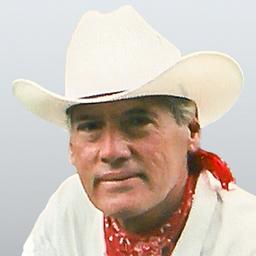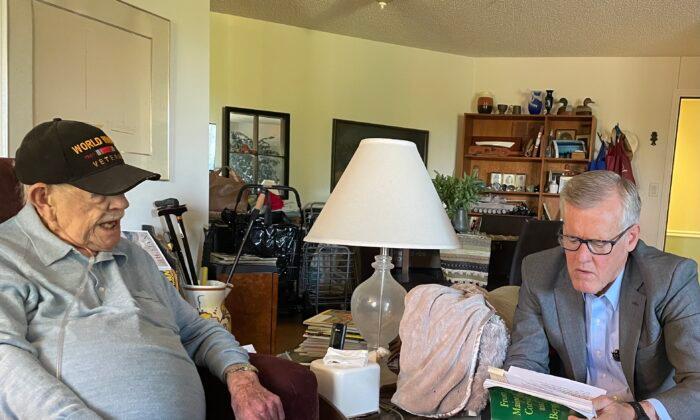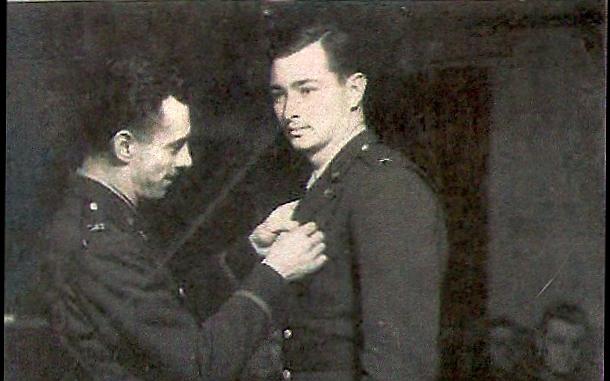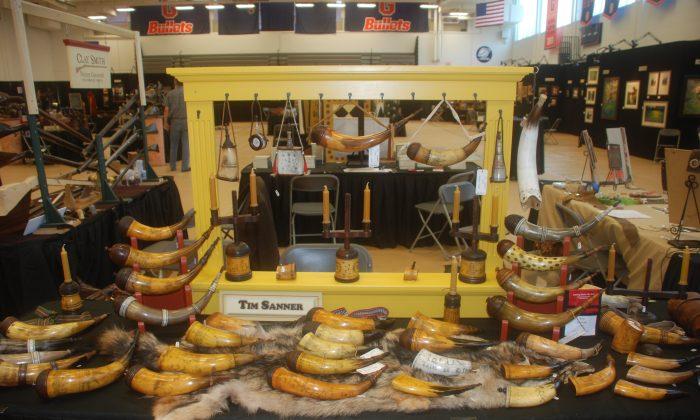I came up from 120-feet. I was enjoying an extended safety stop 20-feet below the surface holding onto thick yellow line the Captain had me tie to a shipwreck below. It was March. The weather in Florida was unseasonably cool. The Atlantic Ocean temperature was in the seventies. Wearing my Pro Mate 7-millimeter wetsuit I felt comfortably warm. With no other chores than to surface, drift away from the large red ball floats at the end of the line and return to ‘Explorer,’ I was in no hurry to return to the dive boat.
I had an uncomfortable feeling the night before. One of those things some call premonitions. Captain Kevin Metz telephoned me that evening. He said that his divers wanted to do the ‘Castor.’ The ship is part of Palm Beach County’s artificial reef program. The 258-foot long cargo ship was seized in the Miami River in 1999 when US Coast Guard agents found five tons of cocaine in the vessel’s bagged sugar cargo. The M/V Dorothee Bos, renamed M/V Castor, was transferred to the reef program, cleaned and sunk in December 2001.
When it was a new ’shipwreck' I remember swimming through the wheelhouse thinking some diver is surely going to try to take its control levers as a souvenir. Someone did. There is usually nothing of interest to take on these artificial reef wrecks even for the most piratical of divers. They are hulks that have mostly been made clear of any obstructions that can serve as diver traps.
The ‘Castor’ sits in sand off the town of Gulf Stream, just north of Delray Beach, Florida. Its depth to the bow is 80-feet. Depth to the superstructure, that a hurricane pushed off to the starboard side, is from 70-90-feet. To the sand the depth is from 114 to 117-feet. Out into the sand long anchor chains lead to the ship’s huge navy anchors. Depth there is 120-feet.
If I have no responsibility for divers after I tie off on the ‘Castor’ I like to explore around the wreck depending on the current. The shipwreck is in the Gulf Stream as are reefs that begin about ¾ to a mile off this Atlantic Coast of Florida. The ‘Castor’s’ depth, current and often limited visibility makes it what I consider an advanced diver experience.
The ‘Castor,’ one of four shipwrecks in the Boynton Beach-Delray Beach area, is the largest and thus easiest for dive boat captains to locate. It is also the deepest. I have complete confidence in Captain Kevin Metz. He is an experienced captain, the owner-operator of ‘Explorer’ out of Boynton Beach Municipal Marina. He is also a dive instructor and veteran diver in the area.
I have been dropped on the ‘Castor’ many times to tie down lines onto the wreck. In six previous drops another captain was off three times. The previous drops were in heavy current making it impossible to reach the shipwreck. On one occasion, a week before this dive, with six to eight foot waves, and a ripping three- knot current, I made two attempts. The first drop was not near the wreck, the second off to the side. I was able to swim to the hulk in 90-feet of water. I grabbed hold of a jagged chunk of steel but was not able to swing the steel chain around it.
David Ochs, Chairman of NAUI, the National Association of Dive Instructors, had a student aboard the dive vessel. He needed a shipwreck dive as part of the training. David said he would try to tie in since I was on air. My two bounce dives put me into a profile that would require decompression on my third dive on the deep wreck without a surface interval.
David managed, with difficulty, to tie the down line to a jagged piece of steel protruding from the hull. The current was so strong on that day that the float ball and dive flag were pulled underwater. David returned for his student and divers descended. It was clearly and advanced dive with conditions that required strength and energy as well as careful air consumption monitoring.
Fast forward to my premonition. It returned the morning I put my dive gear in the car to head out for the five-minute drive to the Boynton Beach Marina. Once aboard ‘Explorer,’ after we got underway with six divers, myself as divemaster, Captain Metz and Captain Gary Kessler, new to the area and wanting to gain experience, I took out photos of the ‘Castor.’
Richie Henshaw was aboard. He had about a hundred dives total and just completed an advanced open water course. I dived with him the day before and knew his air consumption was considerably more than it should be. I took time with Richie, showing him the photograph of the ‘Castor,’ describing the underwater situation and the way the ‘Castor’ was now configured after hurricanes wrecked havoc below. I carefully explained the depth and his need to return to the down line with ample reserve of air.
“I should come back with a thousand pounds?” Richie asked me. I told him no. That since there might be current, since conditions might mean limited visibility and because of the depth, he should return to the down line with 1,500 psi. He agreed.
“You are not diving with me Richie. I must swim the down line and tie it off to the wreck. The captain will put you in with the other divers. Stay with them. You can get out of the current by keeping inside the open hull. Remember where the down line is so you can return to it and come up the line. Do your safety stop at 15-feet with extra time since it is a deep wreck. If you have time and plenty of air you can swim around the superstructure where I will have the down line tied. Start up the line with plenty of air for your safety stop and a good reserve.”
I took my photos and explanation to other divers aboard. They all said they had been on the ‘Castor’ several times. They still looked at my photographs and listened as I explained the situation of the wreck as I last saw it. I told them the current that could be expected. There are times when the Gulf Stream meanders or eddies. There can even be a south current when an eddy in the stream turns inshore water around. There are days when there is no current at all.
I came to Micah Vlassis. He is an avid underwater photographer. He was sitting in the stern of ‘Explorer’ with his large camera. “I’ve dived on it before,” he said. I was about to turn away with my clipping and photos thinking not to intrude on an any diver’s expertise when Micah asked: “What have you got?” I showed him the news clipping of the original sinking of the ‘Castor’ and described the current and possible underwater conditions. He listened.
Captain Metz made a perfect drop. I tied the down line to a starboard railing. I wrapped the line three times around a steel rail careful to choose a place where there was no coral growth. I clipped it in place. Craig, a veteran diver using Nitrox, was to release the line since I would be in severe decompression, diving air, were I to await the six divers return to the down line then untie it.
“I was left on the ‘Castor’ one time. The line was untied before I finished my dive. I’ve told all the divers that after 45 minutes I am going to untie the line,” Craig told me. It was his call. If the line was not untied or if conditions made it too difficult to untie it, as was the case when David Ochs had chained the down line to the jagged piece of steel the week before, I would dive again with a fresh tank of air and handle it.
The week before the current was so strong that it kept the line taut. It was impossible to pull against it to gain slack to release the carabiner clip. Even getting the carabiner turned to face out on the chain was difficult. I was able to get the attention of the last diver about to surface and have him put his entire weight on the line to make slack so it could be released.
This day’s current was not that strong, less than a knot. Visibility on the ‘Castor’ was about 40 feet. The water was not clear, waves on the surface were 2-3 feet building to 5-6 feet. The water temperature was fairly warm.
We left the dock at 8 AM and were on site a little after 9 AM when I made the dive to tie off. I would continue my dive on the ‘Castor’ alone. Captain Metz would send divers down together. I remained on the bow of the ‘Castor’ then swam down into the sand. I explored rocks that form a horseshoe around its bow that faces south. I then swam off along the anchor chain. I monitored my air. I returned to the down line with plenty in reserve. There were no divers to be seen. Horizontal visibility decreased to about 30-feet. I began my ascent along the yellow polypropylene line.
Richie heeded my advice. When I arrived at my stop he was already there. He waved to me and looked very content having made his dive safely. He had a good experience on the wreck. I could see him smile as he left his safety stop and continued to surface under the red float balls. The routine was for divers to surface at the float ball, signal the captain that they are OK, then drift away from the float and line so they can be picked up. I heard ‘Explorer’s’ engines and knew Richie was being picked up.
I remained at my 20-foot stop. You never know what you'll see diving the Gulf Stream. A turtle swam from the reef all the way up to me at my safety stop the week before. The loggerhead female curiously took a look, let me take a couple of photos, then swam back down to the reef. A 14-foot hammerhead shark cruised by recently. I have seen sailfish whisk in and away. Divers have seen whale sharks on the surface.
I was in no hurry. I poked large air bubbles with my finger as they came up from divers below. I could see my reflection in the convex bubbles. I continued to poke them with my finger. I soon expected to see divers surfacing along the line. I would wait for them to surface to their safety stop.
I saw a diver coming up. When the diver was about 30-feet below me, while I could not clearly make out the shape, I saw the white fins. I waited. Very soon I could see the white fins swimming down the line. This was not usual. I assumed that the diver dropped something and was swimming back down to retrieve it. In a few seconds I saw that diver with two more surfacing quickly. I swam down and immediately recognized a critical situation.
The two divers, Lee Burghard and Laura Mantcy, had a third diver, Micah Vlassis, between them. The third diver was unconscious. He did not have a mask on and no regulator in his mouth.
The two divers had hold of the victim’s arms and buoyancy vest and brought him to the surface. Underwater I saw white foam and a bloody spume coming out of Micah’s mouth. His head was rolling. The symptoms were critical. On the surface I tried to inflate his buoyancy compensator. There was no gas left. I examined his computer. It read 101.1 feet depth, 74 F temperature, and zero gas left. He had run out of air below.
I signaled distress to Captain Metz who had ‘Explorer’ waiting to pick divers up. He responded immediately. As he brought the vessel close I told him to call 911. I could see the captain immediately pick up his radio microphone and begin the distress call as he positioned ‘Explorer’ so we could lift the diver aboard.
Laura was in grave distress on the surface. She was moaning in sorrow. Lee kept hold of Micah Vlassis as I did. We swam him to the stern. Richie was already aboard. Captain Gary Kessler was in the stern. Lee and I handed up the unconscious diver as Captain Metz released the clip on his shoulder strap. The tank and BC came free. Micah’s precious underwater camera was on a safety line clipped to his BC. The camera was hanging below.
The three of us remained in the water at the stern of ‘Exlporer’ as immediate CPR and mouth-to-mouth resuscitation was begun. From the water I could see Richie performing chest compressions in the stern. I could make out his shoulders going up and down.
It required time for Captain Metz to come back to the stern. I had Laura hand up her fins and climb the ladder first. Then I asked Lee to go aboard so he could help me haul up Micah’s gear. I handed up the tank and cautioned about the camera. It was taken aboard, then my fins taken so I could climb up the ladder.
Captain Metz keeps four large oxygen tanks aboard. By the time I got on the dive boat, oxygen was being administered. I could see Micah turn his head. He was alive. He was breathing. I got my tank off quickly and monitored the oxygen flow. I assured no one was smoking and increased the flow from 7 to 12 liters per minute. There was plenty of oxygen. The tank still had 2,200 psi and there was another full tank in Captain Metz' large oxygen box.
The captain headed ‘Explorer’ in. Sea Tow, a commercial towing company, responded that they would send their boat to pick up the diver.
It was a fast boat and would get Micah to the Sheriff’s dock inside the Boynton Inlet quicker. The authorities were on their way. ‘Starfish,’ another dive boat owned by Captain Craig Smart out of Boynton Beach, came on site and agreed to pick up the two remaining divers and recover ‘Explorer’s’ float balls and line.
Sea Tow’s Captain Chris arrived as ‘Explorer’ headed back toward the Boynton Inlet. We transferred Micah to the rigid inflatable boat. Captain Kessler and I rode with Micah. I transferred the oxygen tank and we quickly replaced the mask and bag. Micah was conscious. Sea Tow’s Captain Chris began a fast run to the inlet. Seas ran high now and the RIB inflatable bounced in the waves.
I put Micah’s head on my foot to prevent it from banging on the rigid floor. I asked Captain Chris to slow so we could pull Micah up onto the decking to protect his back. He had a cushion and we put it under Micah. The diver was responsive and able to move his legs and help push himself up on the deck and get on the cushion.
As we arrived at the Boynton Inlet we were met by a US Coast Guard inflatable patrol boat and a Florida Wildlife Commission boat. A US Coast Guard helicopter was flying overhead.
An air sea helicopter transfer would have been difficult from ‘Explorer’ if not unsafe. The Coast Guard vessel used its lights and siren to escort us through the inlet and warn off outgoing boat traffic.
Captain Chris pulled into the county’s pier. Palm Beach County Fire Rescue, under the command of Captain Ray, were there and waiting. Captain Kessler and I handed Micah up to them. They placed him on a backboard. The paramedics pulled down Micah’s wetsuit, ascertained facts from me as I continued to monitor the oxygen and insure there was still ample supply in the tank. Micah’s vital signs were taken. His oxygen level was measured, an EKG device was placed on his chest. His blood pressure was normal. He answered questions put by the paramedics. While he didn’t know what day it was he told them he is from Boynton Beach.
Micah was transferred to a gurney. ‘Explorer’s’ oxygen hose was removed from the tank I was holding and placed on the PB Fire Rescue tank attached to the gurney. I turned off the oxygen cylinder. I had previously assured that no one was or would smoke on ’Explorer' or on the county pier. The oxygen cylinder still had 1,200 psi left.
The Palm Beach County Sheriff, the town of Ocean Ridge Police, a Florida Wildlife Commission officer, and the US Coast Guard began fact gathering. Television news arrived with their cameras. The potentially tragic incident ended with a good result: Micah was doing well. He was resuscitated and saved. He was evacuated by ambulance to St. Mary’s Hospital in West Palm Beach for treatment. St. Mary’s has a decompression facility.
Lee Burghart described what happened underwater: “Micah was behind me on the wreck. He seemed a little disoriented as to where the ascent line was. He showed me his gauge. It was about 600 psi. I swam to the line. He was out of air. I gave him my octopus. In the process he lost his mask. He panicked then spit my regulator out of his mouth. He became unconscious and we rushed him up to the surface.”
Micah is 38-years old. He has been diving for five years, certified as an Open Water Diver through SSI (Scuba Schools International) and has over 150 dives.
“I remember I was down on a deep dive on the ‘Castor.’ It’s 120 feet to the sand. I didn’t keep a close eye on my air gauge. It went quicker than I thought it would,” he related.
“It was down to 600-700 psi when I grabbed Lee. I blacked out and woke up in the hospital,” Micah said. He has no permanent lung damage and no brain damage. He was diving on 35% Nitrox mixed gas.
Micah was hospitalized for two weeks. “Once there was salt water in my lungs the chamber was not an issue. I had a bad, bad lung infection and pneumonia. I was given antibiotics and heavy sedation,” Micah said.
When any accident happens at sea or on the open ocean, even when diving inshore, quick response is critical. Teamwork is imperative. Every Scuba instructor, considering the facts of this incident, can renew emphasis on the prime rule of diving: ‘Never dive alone.’ I violate that rule as do many underwater photographers and experienced underwater hunters and veteran divers. It is fraught with peril. Buddy diving assures companionship and a safety margin. In Europe club diving requires diving with an instructor or trained dive guide.
An old NAUI standard revision recently published in SOURCES, The Journal of Underwater Education, is reminiscent of progress when the diver certification agency made underwater pressure gauges mandatory gear in 1977. The gauges give divers an ability to constantly monitor their remaining air or gas mixture. Now modern dive computers are in common use. Of course hoses can rupture, equipment can fail and unforeseen circumstances can arise.
Proper rescue is taught as is buddy breathing underwater. Learned skills must be practiced. In every other activity people practice. Concert musicians practice, tennis players practice, ball players practice, actors rehearse. Divers must practice and refresh their skills with their instructors and buddies. All should take advantage of community programs to learn CPR and rescue breathing as well as first aid.
“I never did CPR before. I only saw it on TV,” Richie told me. He did well. He brought Micah back to life with chest compressions while Captain Kessler performed rescue breathing.
“I was scared. My legs are still shaking. I prayed,” Richie said on the dock as we waited until authorities finished their paperwork about the incident. Captain Kessler was trained and prepared. He and Richie made a good team once Micah was aboard ‘Explorer.’ The entire group of divers, with Captain Metz, turned a potentially fatal accident into a life saving situation.
“I got complacent on things. I let my guard down and got caught on the bottom without enough air,” Micah related. It is an important lesson. Every diver can learn from Micah’s experience.
Important lessons learned that can be taught by example so similar situations can be prevented and diving remains a wonderful opportunity to explore and discover the underwater world.
ABOUT THE AUTHOR: John Christopher Fine is a Master Scuba Instructor and Instructor Trainer. He is a long-time member of Divers Alert Network (DAN). He has taught thousands of people to dive at all levels of instruction. A marine biologist, he has authored 25 books about ocean science and the sea. He served as an elected officer of the Confederation Mondiale des Activities Subaquatiques (CMAS) and holds the highest licenses in diving.





